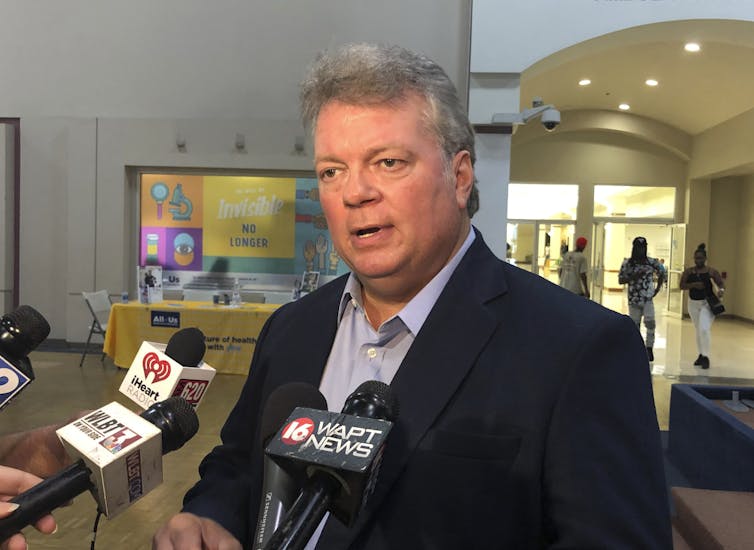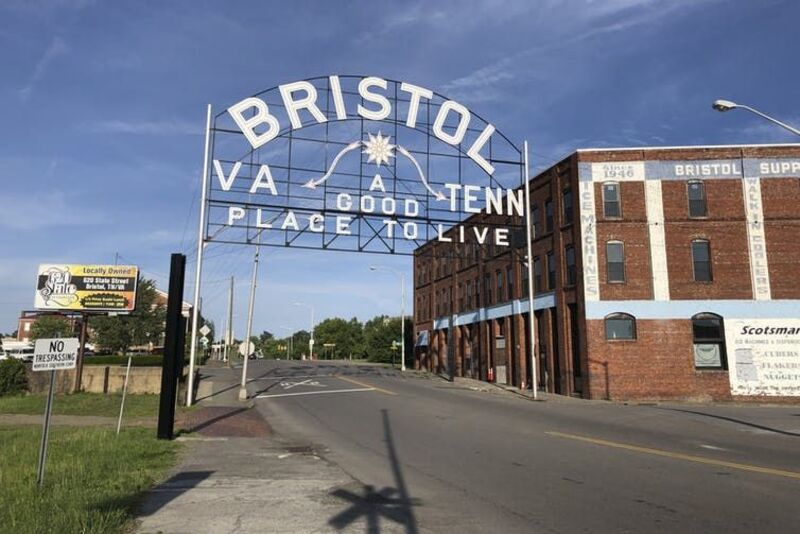Jane Bolin, Texas A&M University ; Bree Watzak, Texas A&M University , and Nancy Dickey, Texas A&M University
Presidential candidates and other politicians have talked about the rural health crisis in the U.S., but they are not telling rural Americans anything new. Rural Americans know all too well what it feels like to have no hospital and emergency care when they break a leg, go into early labor, or have progressive chronic diseases, such as diabetes and congestive heart failure.
More than 20% of our nation’s rural hospitals, or 430 hospitals across 43 states, are near collapse. This is despite the fact that rural hospitals are not only crucial for health care but also survival of their small rural communities. Since 2010, 113 rural hospitals across the country have closed, with 18% being in Texas, where we live.
About 41% of rural hospitals nationally operate at a negative margin, meaning they lose more money than they earn from operations. Texas and Mississippi had the highest number of economically vulnerable facilities, according to a national health care finance report in 2016.
As rural health researchers, we’re well aware of the scope of rural hospitals woes’, which span the entire country. Struggling rural hospitals reflect some of the problems with the U.S. health care system overall, in that the poor often struggle to have access to care and there are few obvious solutions to controlling rising costs.
If 20% of America lives in a rural county, why is the nation so slow to address rural health disparities?
There goes the hospital, and the town

Emily Wagster Pettus/AP Photo
Each time a rural hospital closes, there are tragic consequences for the local community and surrounding counties. While the medical consequences are the most obvious, there is also loss of sales tax revenue, reduction in supporting businesses such as pharmacies and clinics. There are also fewer professionals, including doctors, nurses and pharmacists, and fewer students in local schools.
The closing of a rural hospital often signals the beginning of progressive decline and deterioration of small rural towns and counties. Hospitals often serve as financial and professional anchors as well as source of pride for its small rural community. It also often means loss of other employers or inability to recruit new employers due to lack of nearby health care. When a rural hospital closes its doors, unemployment often rises, and average income drops.
There are no nurses, doctors, pharmacists or ERs for local farmers, ranchers, growers and assorted men, women and children who love living and working in America’s vast rural regions. Rural communities and rural citizens are often left with no options for routine primary care, maternity care or emergency care. Even basic medical supplies are often hard to find.
Residents in these communities have had to take their chances living in America’s heartland, finding alternative options for basic health care services.
A compound fracturing
Those rural hospitals that have remained open are facing increasing legislative, regulatory and fiscal challenges. Some policy analysts have noted that the states with the most closings have been in states that did not expand Medicaid.
And, many of the towns in which they are located suffer from an apparent leadership vacuum. There are typically few experts within small towns who are prepared to address ways to avoid the loss of rural health care services and rural hospitals.
Small, rural communities are also less likely to have conducted formal comprehensive health needs assessments or invested in strategic planning to strengthen the ability of the community to adapt more quickly to changes in the local economy as well as changes in financing health care at the federal level. Health care services planning is often limited to input from the rural community leaders and “power brokers” rather than a cross-section of the greater community.
For example, community leaders may want to have an orthopedic surgery option, but if they had input from the community, they would know that prenatal/maternity care was more of a priority and these patients don’t have transportation so they also need a bus or van to pick up for appointments.
There are also cross-cutting rural community challenges such as:
-
Declining reimbursement levels
-
Shrinking rural populations
-
Health professionals moving to bigger cities for higher compensation
-
Increasing percentage of uninsured leading to rising uncompensated care
-
Increasing operating costs
-
Older and sicker rural dwellers with complex multi-system chronic diseases.
The result is that rural hospitals often lack a dependable economic base to operate. In addition, changing processes, payment strategies and regulations coming from state and federal regulators place the small rural facility at particular risk because keeping up with changing payment or reporting rules often requires a full time person.
The continuing closures have accelerated the urgency to understand and address the problems faced by rural Americans seeking access to care. Each rural region of the country has its own industry, economy, cultures and belief systems. Therefore, rural solutions will be unique and not an urban solution downsized to a smaller population.
Replacing the hospital with … what?

LightField Studios/Shutterstock.com
At Texas A&M Health Science Center, we are among several researchers focused on rural disparities by researching causes of socio-economic inequities and by working within those rural communities to “give a leg up” to distressed rural communities and counties nationally, and in Texas.
We’ve come to see that providing health care services in rural counties may not include maintaining a full-service hospital, but rather “right-sizing” care to match the resources, demographics, geography and availability of providers in the community.
For example, the ARCHI Center for Optimizing Rural Health is currently working with hospitals and their communities to determine feasible health care options that will be supported by the community, meet community needs, and most importantly, offer local, high-quality care. Using tools like ARCHI’s DASH – a quarterly dashboard that shows performance of the hospital in financial, quality and patient satisfaction arenas – may help hospital boards, communities and local leaders better understand their status and need for change from business as usual.
While it may be that the changing health care delivery systems are altering what health care delivery looks like, change can almost never be instant. Communities may need to envision alternatives to hospitals.
In some communities, urgent care with radiology and lab services may be able to service the majority of health care needs. In other communities, a “micro-hospital” with an ER and swing bed options – which allow rural hospitals to continue to treat patients who need long-term care or rehabilitation – may be the better fit. Telehealth, or providing care through televideo virtual face-to-face from remote sites to rural residents, can also be an option.
Challenges specific to the dilemma of rural hospital closure will take a national, state and local effort focused on the plight of rural communities struggling to maintain availability of essential health care services. Our nation’s vulnerable rural communities deserve a focused, coordinated effort to address this compelling problem before any more rural hospitals close their doors.
This article is part of a collaborative project, Seeking a Cure: The quest to save rural hospitals, led by IowaWatch and the Institute for Nonprofit News, with additional support from the Solutions Journalism Network.
![]()
Jane Bolin, Professor of Health Policy + Management, Deputy Director of the Southwest Rural Health Research Center; Associate dean of research, College of Nursing, Texas A&M University ; Bree Watzak, Clinical assistant professor, pharmacy, Texas A&M University , and Nancy Dickey, Professor, Executive Director, Texas A&M Rural and Community Health Initiative, Texas A&M University
This article is republished from The Conversation under a Creative Commons license. Read the original article.
Memberships
Steve is a member of LION Publishers , the Wisconsin Newspaper Association, the Menomonie Area Chamber of Commerce, the Online News Association, and the Local Media Consortium, and is active in Health Dunn Right.
He has been a computer guy most of his life but has published a political blog, a discussion website, and now Eye On Dunn County.



Add new comment